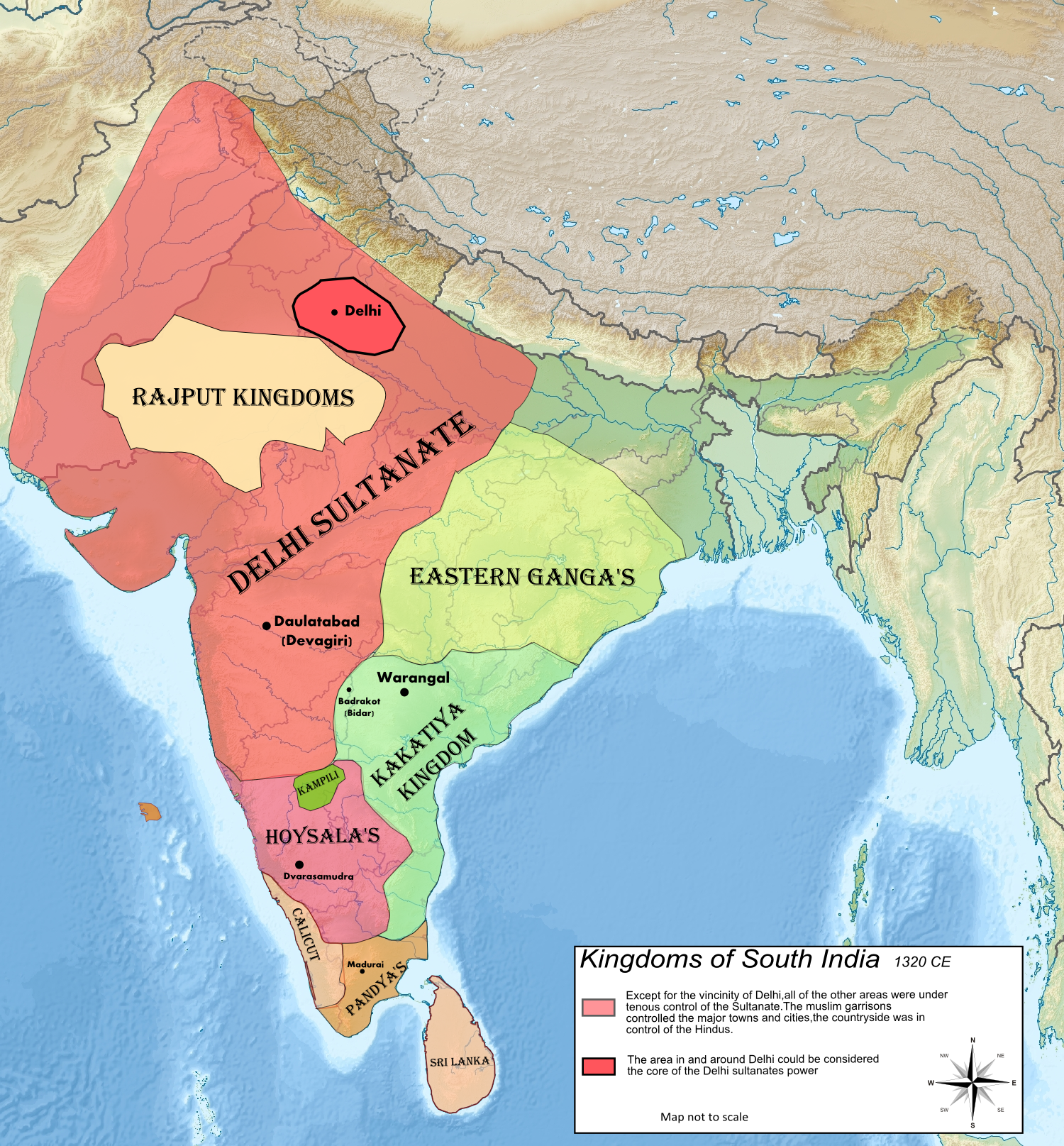Kampili on:
[Wikipedia]
[Google]
[Amazon]

 The Kampili kingdom was a short-lived Hindu kingdom of early 14th-century in the Deccan region. The kingdom existed near Ballari and Tungabhadra river in northeastern parts of the present-day
The Kampili kingdom was a short-lived Hindu kingdom of early 14th-century in the Deccan region. The kingdom existed near Ballari and Tungabhadra river in northeastern parts of the present-day
File:Old Kannada inscription (1326 AD) of Kampili Raya in Shiva temple on Hemakuta hill in Hampi.JPG, Old Kannada inscription (1326 A.D.) of Kampili Raya, King of Kampili Kingdom, in

Karnataka
Karnataka (; ISO: , , also known as Karunāḍu) is a state in the southwestern region of India. It was formed on 1 November 1956, with the passage of the States Reorganisation Act. Originally known as Mysore State , it was renamed ''Karnat ...
state, India
India, officially the Republic of India (Hindi: ), is a country in South Asia. It is the seventh-largest country by area, the second-most populous country, and the most populous democracy in the world. Bounded by the Indian Ocean on the so ...
. It ended after a defeat by the armies of Delhi Sultanate, and a ''jauhar
Jauhar, sometimes spelled Jowhar or Juhar, was a Hindu practice of mass self-immolation by women, in the Indian subcontinent, to avoid capture, enslavement and rape by an invading army, when facing certain defeat during a war. Some reports of ...
'' (ritual mass suicide) in 1327/28 CE when it faced a certain defeat. The Kampili kingdom in some historical accounts is called the Basnaga kingdom, and as what inspired and ultimately led to the Hindu Vijayanagara Empire
The Vijayanagara Empire, also called the Karnata Kingdom, was a Hindu empire based in the region of South India, which consisted the modern states of Karnataka, Andhra Pradesh, Tamil Nadu, Kerala, Goa and some parts of Telangana and Mahar ...
.
History
The founder of the kingdom was a Hoysala commander, Singeya Nayaka-III (1280–1300 AD), who declared independence after the Muslim forces of the Delhi Sultanate defeated and captured the territories of theSeuna Yadavas of Devagiri
The Seuna, Sevuna, or Yadavas of Devagiri (IAST: Seuṇa, –1317) was a Medieval Indian dynasty, which at its peak ruled a kingdom stretching from the Narmada river in the north to the Tungabhadra river in the south, in the western part of t ...
in 1294 CE. Nayaka-III was succeeded by his son Kampilideva in 1300, who remained in dispute with the territorial claims of Delhi Sultanate. The Kampili kingdom finally fell to the invasion in 1327/28 CE from the north by the forces of Muhammad bin Tughluq
Muhammad bin Tughluq (1290 – 20 March 1351) was the eighteenth Sultan of Delhi. He reigned from February 1325 until his death in 1351. The sultan was the eldest son of Ghiyath al-Din Tughluq, founder of the Tughlaq dynasty. In 1321, the youn ...
, the Sultan of Delhi. The triumphant army led by Malik Zada sent the news of its victory, over Kampili kingdom, to Muhammad bin Tughluq in Delhi by sending a straw-stuffed severed head of the dead Hindu king. From the ruins of the Kampili kingdom, soon rose the Vijayanagara Empire
The Vijayanagara Empire, also called the Karnata Kingdom, was a Hindu empire based in the region of South India, which consisted the modern states of Karnataka, Andhra Pradesh, Tamil Nadu, Kerala, Goa and some parts of Telangana and Mahar ...
in 1336 CE, and grew into one of the famed empires of India that ruled Southern India for over 200 years.
Gallery
mantapa
A mandapa or mantapa () is a pillared hall or pavilion for public rituals in Indian architecture, especially featured in Hindu temple architecture.
Mandapas are described as "open" or "closed" depending on whether they have walls. In temples, ...
of a Shiva temple built by him on Hemakuta hill in Hampi
Hampi or Hampe, also referred to as the Group of Monuments at Hampi, is a UNESCO World Heritage Site located in Hampi town, Vijayanagara district, east-central Karnataka, India.
Hampi was the capital of the Vijayanagara Empire in the 14th&n ...
.
File:Old Kannada inscription (1326 AD) of Kampili Raya on rock face of Hemakuta hill in Hampi.JPG, Old Kannada inscription (1326 A.D.) of Kampili Raya, King of Kampili Kingdom, on rock face of Hemakuta hill in Hampi.
File:Old Kannada inscription (1309 A.D.) of Kampili Raya on rockface of Hemakuta hill in Hampi.JPG, Old Kannada inscription dated 1309 A.D., of Kampili Raya, King of Kampili Kingdom, on rock face of Hemakuta hill in Hampi.
See also
* Kammata Durga, the capital of the Kampili kingdom * Kampilideva, the last Kampili king, father of Kumara Rama * Kumara Rama, a Kampili princeReferences
{{reflist Hoysala Empire History of Karnataka